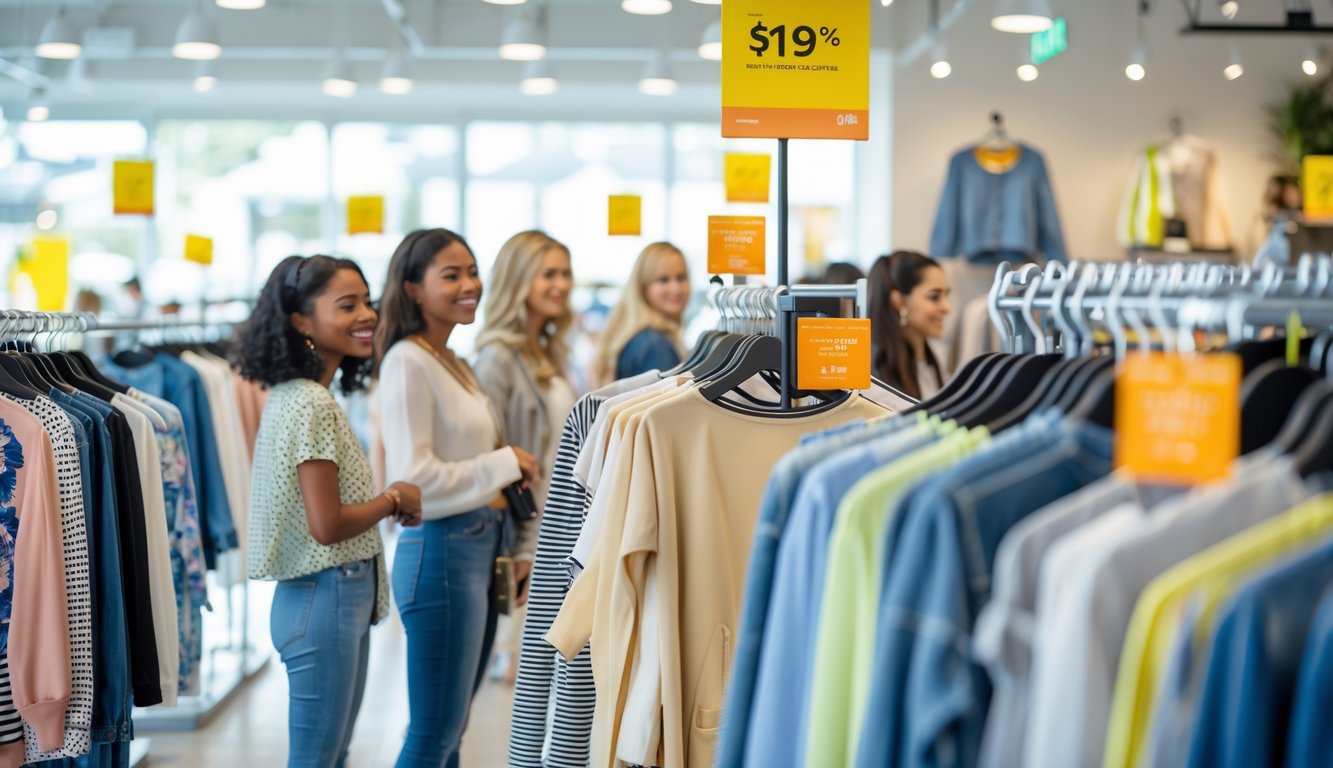
Modern Markdown Strategies in Retail
Still can’t get over last week: the endcap was packed with discounted logo hoodies, but the plain tees (same brand, way more useful) stayed full price. No one’s buying that all-inventory markdowns work. Retailers are getting way more surgical—SKUs, trending in real time, discounts only on the sizes or colors that are stuck or hyped.
Dynamic and Strategic Markdowns
Everyone’s throwing around “dynamic markdown strategy” like it means something, but honestly, you have to adapt. I helped run BOGO pricing for XL t-shirts once—sales doubled in that size, margins held elsewhere. Automated triggers on inventory and demand (AI software pulling data straight from POS) keep you from drowning in unsold junk every July. A buyer told me last month, “If influencers tag a style, we markdown there, nowhere else.” No mercy for slow movers, no blanket discounts. The old “one-size-fits-all” markdown is dead—surgical targeting keeps the brand from looking desperate.
Optimized Markdown Timing and Frequency
And yet, retailers keep dropping prices too early, training everyone to just wait. When I helped run a pilot, we staggered markdowns—late season, only for slow colorways and sizes. It was boring, but the inventory cleared 20% faster than static biweekly discounts. ShipBob’s 2025 report backs this: 66% shopper engagement on well-timed BOGO events. Tailoring markdown frequency—midweek vs. weekend—moves inventory without wrecking brand value. Still don’t get why anyone drops premium basics the month they launch, but, whatever.
Balancing Brand Value and Discounts
Brands get hooked on markdowns, then panic when customers expect nonstop sales. I watched a sneaker brand nearly kill its premium vibe after six months of markdowns. My old manager swore by a “last chance” rack, but only after keeping core styles full price—keeps the brand looking strong. So, is the markdown strategy desperate or careful? There’s barely any line between moving old stuff and wrecking loyalty. Look at those influencer collabs—discount sparingly, actually explain value, and use markdowns as a tool, not a crutch.
Pricing Tactics That Drive Sales
So, I guess we all assume the cheapest tag wins? Eh, not so fast. There’s this whole circus of markdowns, “charm” pricing, and those sneaky midnight coupons—honestly, half the time I’m convinced it’s just a random number generator, but no, it’s all a psychological game. Nobody tells you that, but it’s true.
Markdown Pricing Mechanics
You ever wonder why those neon-orange boots you hated are suddenly 40% off? It’s not just because someone got bored in the stockroom. Retailers pull up spreadsheets, stare at sales velocity charts, and hit the markdown button when the numbers start tanking. I mean, I used to think it was just “clearance for the heck of it,” but my friend (three years wrangling racks at one of those mall chains—she’s seen things) swears 70% of markdowns happen on strict cycles. Sell-through rates, overstock fees, supplier pressure, whatever. Not because it’s Friday. Not because the manager’s in a good mood. Just cold, boring data.
And it’s all waves—first 15%, then 33%, then the “okay, fine, take it” 50% off. I can’t keep up. Apps push “flash sales” at random hours and suddenly everyone’s buying socks they forgot they needed. Is anyone else noticing the pattern? Or am I just losing it?
Charm Pricing and Price Elasticity
$19.99 yoga pants are, what, a penny less than $20? But I’ll still buy them because my brain refuses to see the difference. “Left-digit bias” or whatever. Even people who scoff at the trick fall for it. I talked to this pricing consultant who basically rolled his eyes and said, “Yeah, people only care about the first number.” So $14.97 exists. I hate it, but it works.
But then, explain this: Why do some shoppers go wild for a 7% markdown on a $30 dress, but nobody blinks at $5 off a $300 coat? I don’t get it. Those wool coats last winter? Sat there until they dipped under $79, then poof, gone. I swear, it’s like the universe knows when I’m about to give up hope. And brands—man, if they overdo the charm pricing, suddenly everyone’s like, “Meh, I’ll wait for the next deal.” Retail Dive (Jan 2024) said brands that do frequent, small markdowns sell 12% more. I guess that’s a win? Feels weird.
Coupons and Targeted Discounts
Why does my phone buzz at 2:57 a.m. with “exclusive” coupons for the same three stores? And it’s never the same code. I mean, I know the algorithm’s watching me click on sage-green puff vests and then abandon them in my cart (guilty). It’s creepy. But I keep clicking.
They don’t blast these deals to everyone. If you bought last season’s blazer, congrats, here’s 15% off the matching pants. No promo code on the homepage, just a weirdly personal email. I tried adding a $5 coupon to abandoned cart emails—clicks doubled compared to generic 10% codes. Adobe Commerce said the same thing in a study (March 2025). Guess people like feeling special.
Sometimes, it’s like they’re playing 4D chess: markdowns go live for one style, then a “member-only” code pops up at 2 a.m., then it’s gone by breakfast. Only loyalty folks even know it happened. But why do the best coupons always hit when I’m asleep? If you figure it out, tell me, because I’m exhausted.



